
Wrecking Crew is an action game developed and published by Nintendo. Designed by Yoshio Sakamoto, it was first released as an arcade video game for the Nintendo VS. System in 1984, titled Vs. Wrecking Crew with a simultaneous two-player mode. It was released as a single-player game for the Family Computer (Famicom) console in 1985, and as a launch game for the Nintendo Entertainment System (NES) later that year. A sequel, Wrecking Crew '98, was released in Japan in 1998 for the Super Famicom.
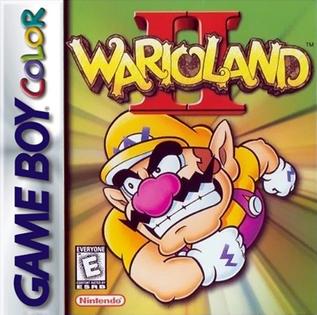
Wario Land II is a 1998 platform video game developed and published by Nintendo for the original Game Boy. It was later re-released and optimised for the Game Boy Color. In the game, Wario has to recover his treasure from Captain Syrup. The Game Boy Color version was released for the Nintendo 3DS Virtual Console in 2012.

Donkey Kong Jr. is a 1982 arcade platform game that was released by Nintendo. It is the sequel to Donkey Kong, but with the roles reversed compared to its predecessor: Mario is now the villain and Donkey Kong Jr. is trying to save his kidnapped father. It first released in arcades and, over the course of the decade, was released for a variety of home platforms. The game's title is written out as Donkey Kong Junior in the North American arcade version and various conversions to non-Nintendo systems.

Adventures of Lolo is a puzzle video game released in 1989 by HAL Laboratory for the Nintendo Entertainment System. It is a compilation of puzzles from Eggerland: Meikyū no Fukkatsu and Eggerland: Sōzō he no Tabidachi. It is the fifth game in the Eggerland series, the third one released in Europe, but the first one released in North America. It was available on the Wii's and Wii U's Virtual Console in North America and in PAL regions, as well as on the Nintendo Switch Online's virtual Nintendo Entertainment System library.
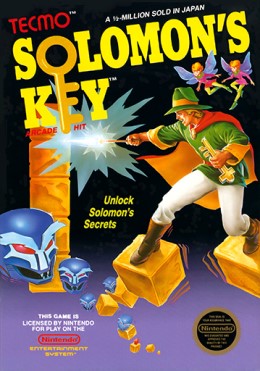
Solomon's Key is a puzzle game developed by Tecmo in 1986 for an arcade release on custom hardware based on the Z80 chipset. It was ported to multiple systems including the Nintendo Entertainment System and Commodore 64. The PC Engine version was known as Zipang and the Game Boy version as Solomon's Club. A prequel, Solomon's Key 2, was released in 1992 for the NES. The game was also ported to Virtual Console for the Nintendo 3DS and Wii U in 2006 and later to Nintendo Switch Online in 2018.

iQue, Ltd. is a Chinese video game/game localization and support development company located in Suzhou. It was founded as a joint venture between Wei Yen and Nintendo in 2002 as a Chinese video game console manufacturing company. The following year, the company released the iQue Player. The company had manufactured and distributed official Nintendo products for the mainland Chinese market under the iQue brand until 2018.

Bomb Jack is a platform game published by Tehkan for arcades and later ported to home systems. The game was a commercial success for arcades and home computers. It was followed by several sequels: the console and computer game Mighty Bomb Jack, the arcade game Bomb Jack Twin, and Bomb Jack II which was licensed for home computers only.
The Virtual Console is a defunct line of downloadable video games for Nintendo's Wii and Wii U home video game consoles and the Nintendo 3DS family of systems.
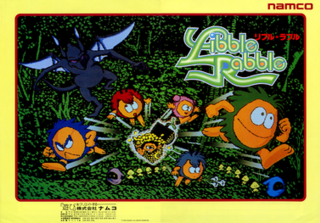
Libble Rabble is a 1983 puzzle arcade video game developed and published in Japan by Namco. The player is tasked with using two colored arrows, Libble and Rabble, to wrap them around pegs and surround small creatures known as Mushlins to "harvest" them under a time limit. The player can also uncover treasure chests that will have the player searching the stage for items in order to access a special bonus stage. It ran on the Namco Libble Rabble hardware, one of the only games to do so.

Bomberman: Panic Bomber is a 1994 puzzle video game developed and published by Hudson Soft for the PC Engine on December 22, 1994. It was later released for the Neo Geo, Super Famicom, Sharp X68000, FM Towns, NEC PC-9821, Virtual Boy, and PlayStation Portable. It saw a re-release for the Wii and Wii U's Virtual Console services. Panic Bomber is a falling block game with the players' goal being to clear matching blocks using bombs, ensuring that their screen does not fill and that their opponents' screens do. It received mixed to positive reception, identified as a decent game by multiple critics. It has been compared to the falling block puzzle game Tetris. The Virtual Boy version received a mixed reception for its handling of the platform's visual capabilities.

Bomberman '93 is a video game in the Bomberman series. It was released on the PC Engine on December 11, 1992 in Japan, with western TurboGrafx-16 releases following in 1993. The game was also re-released for PCs in 2002 alongside the TurboGrafx-16 version of Bomberman and Bomberman World as part of a compilation disc titled Bomberman Collection. The game was re-released for the Virtual Console, with full multiplayer capability intact, for Wii on November 21, 2006 in North America, December 8, 2006 in Europe, and July 6, 2007 in Australia. The game was re-released for the Wii U on December 28, 2016 in Japan, November 30, 2017 in North America and December 14, 2017 in Europe. Bomberman '93 later spawned a sequel titled Bomberman '94.

The Mysterious Murasame Castle is an action-adventure video game developed by Nintendo and Human Entertainment and published by Nintendo for the Family Computer Disk System. It was released exclusively in Japan on April 14, 1986. The game was one of the early games released for the system, and the second original game after The Legend of Zelda. The game was released outside Japan for the first time on the Nintendo 3DS Virtual Console in Europe and Australia in May 2014 and in North America in August. It was added to the Nintendo Switch Online service on October 31, 2023.
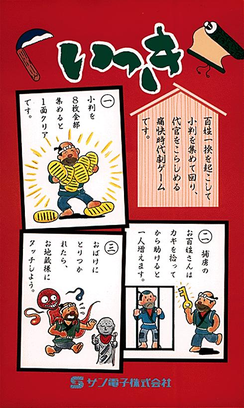
Ikki, is an arcade game originally released by Sunsoft in 1985. The game was released for the Famicom on November 28 of the same year, and is a multi-directional scrolling action game which contains some elements of a top-down shooter. The game is known outside Japan as Boomerang and Farmers Rebellion. Its main character, Gonbe, makes a cameo appearance in Atlantis no Nazo, another Sunsoft game.

Super Contra, known as Super Contra: The Alien Strikes Back in Japan, is a run and gun video game by Konami, originally released as a coin-operated arcade video game in January 1988. It is the sequel to the original Contra and part of the Contra series. The game stars Bill Rizer and Lance Bean as they are sent to thwart another alien invasion from the vicious Red Falcon.
The Nintendo Network is a defunct online service formerly ran by Nintendo that provided free online functionality for the Nintendo 3DS and Wii U systems and their compatible games. Announced on January 26, 2012, at an investors' conference, it was Nintendo's second online service after Nintendo Wi-Fi Connection. Former president of Nintendo Satoru Iwata said, "Unlike Nintendo Wi-Fi Connection, which has been focused upon specific functionalities and concepts, we are aiming to establish a platform where various services available through the network for our consumers shall be connected via Nintendo Network service so that the company can make comprehensive proposals to consumers."

The Nintendo 2DS is a handheld game console produced by Nintendo. Announced in August 2013, the device was released in North America, Europe and Australia on October 12, 2013. The Nintendo 2DS is an entry-level version of the Nintendo 3DS which maintains otherwise identical hardware, similar functionality, and compatibility with software designed for the Nintendo DS and 3DS. However, the 2DS is differentiated by a new slate form factor rather than the clamshell design used by its precursors and by lacking the Nintendo 3DS's signature autostereoscopic 3D display. The 2DS was sold concurrently with existing 3DS models as an incentive to expand the market for Nintendo 3DS games; former Nintendo of America president Reggie Fils-Aimé stated that the 2DS was primarily targeted towards younger players, whom Nintendo had previously advised not to use the 3D functionality on the 3DS due to potential eye health concerns. The Nintendo 2DS's successor, the New Nintendo 2DS XL, was launched in 2017.
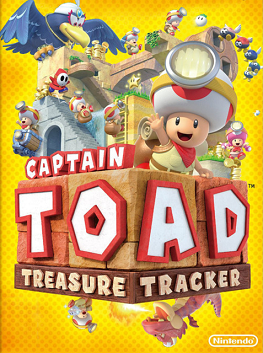
Captain Toad: Treasure Tracker is a 2014 action puzzle video game developed and published by Nintendo for the Wii U. The game was re-released for the Nintendo Switch and Nintendo 3DS in 2018 with additional content. It is a spin-off of the Super Mario series and a part of the larger Mario franchise. The game stars Captain Toad and Toadette as they complete levels, defeat enemies and save each other from the antagonist Wingo. Each level is contained within a miniature diorama-like environment that requires puzzle-solving and platforming challenges to complete. The player also uses the Wii U GamePad to rotate the camera and reveal new information and interact with the environment.














